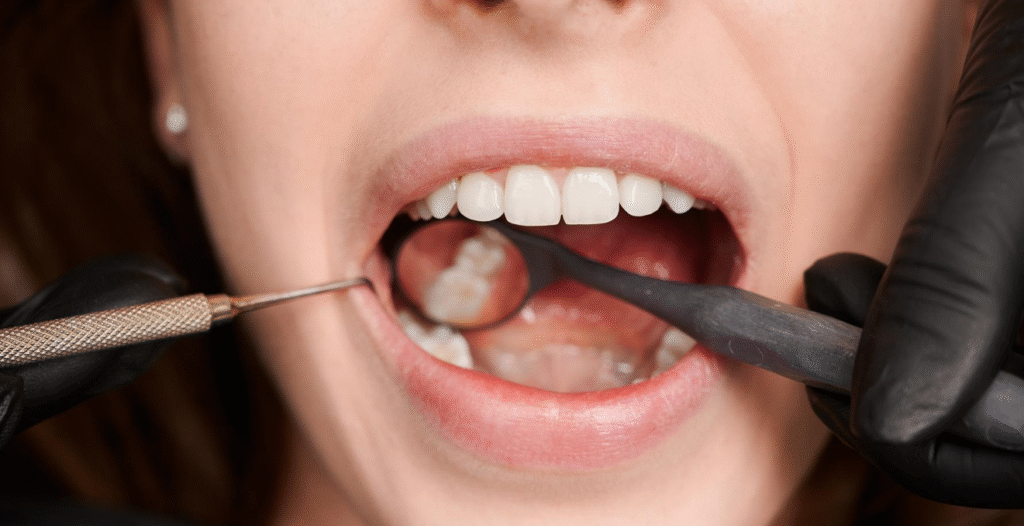| Detail | Description |
|---|---|
| Procedure Name | Gum Recession Surgery (Gum Grafting / Gingival Graft) |
| Purpose | Restores gumline, covers exposed roots, reduces sensitivity |
| Common Graft Sources | Roof of mouth (palatal tissue), donor tissue |
| Types of Grafts | Connective tissue, free gingival, pedicle grafts |
| Minimally Invasive Options | Pinhole Surgical Technique |
| Who Performs It | Periodontist (gum specialist) |
| Average Cost | $700 to $2,000 per tooth |
| Typical Recovery Time | 10 to 14 days |
| Associated Risks | Discomfort, swelling, infection, graft failure |
| Trusted Reference | Cleveland Clinic: my.clevelandclinic.org/health/diseases/22753-gum-recession |

A subtle shift, such as more tooth showing than before, a sudden chill when drinking iced tea, or an uneven gumline in the mirror, can be the first indication of gum recession for many patients. Despite their apparent minority, these symptoms frequently indicate something much more serious. Gum recession is more than just a superficial imperfection. It’s a structural deterioration that subtly erodes the framework that surrounds your teeth. If treatment is not received, decay, tooth instability, and eventually tooth loss may result.
Gingival grafting, another name for gum recession surgery, has developed into a remarkably successful solution to this problem. Experts step in by surgically realigning or transplanting healthy tissue over the afflicted area rather than letting the gumline further recede. In addition to strengthening oral function, this procedure significantly improves the smile’s aesthetic coherence. For people who are extremely sensitive as a result of root exposure, the procedure is extremely beneficial.
Periodontists can now provide procedures that are noticeably more comfortable and effective by utilizing contemporary techniques. The connective tissue graft is still considered the gold standard. This entails cutting a thin piece from under the palate and covering the exposed root with it. However, the pinhole surgical technique has emerged as a particularly inventive option for those looking for less invasive methods. Without the need for stitches or incisions, the gum is released and slid over the tooth with just a tiny puncture—a very effective technique for a quicker recovery.
Attention to these procedures has increased in recent years due to the growing interest in dental aesthetics among influencers and professionals. Celebrities have subtly adopted cutting-edge dental procedures to maintain the basic beauty of their smiles as well as to brighten their teeth. Cosmetic dentists in Los Angeles and London report a steady rise in gum graft inquiries from public figures, despite the fact that privacy is frequently preserved. Demand is clearly being shaped by the trend, even though the names are still unknown.
Gum tissue just doesn’t grow back once it’s gone, according to biology. Recessing gumlines need to be restored through intervention, in contrast to skin, which regenerates and heals. Furthermore, topical varnishes and desensitizing toothpaste are only surface-level fixes, even though they might provide momentary relief. Surgery is the only long-term solution that preserves both structural integrity and appearance.
Recessions have a variety of causes, some of which are surprisingly straightforward. Chronic inflammation, misaligned teeth, and excessive brushing with hard-bristled toothbrushes are all contributing factors. Surprisingly, even oral piercings can cause trauma that results in gum loss. Because tobacco significantly reduces gum resilience and obscures early symptoms, smokers are especially vulnerable.
Dentists use the depth of the periodontal pocket—the spaces created when the gums separate from the tooth—to make diagnoses. Gums in good health range in size from 1 to 3 millimeters. The need for surgical correction increases when the depth reaches 5 millimeters or more. Patients are now at risk for bone loss beneath the gum line, which could destabilize the entire tooth, in addition to additional recession.
It may surprise you to learn that gum recession surgery is an outpatient procedure. The average recovery time is two weeks, though this can change depending on how many grafts were done and whether donor tissue was used. Patients are advised to avoid brushing the treated areas and to switch to a soft food diet after surgery. Although surgeons frequently recommend a particular rinse to prevent infection, pain is typically treated with over-the-counter medications.
The advantages of grafting procedures have become abundantly evident due to strategic advancements in periodontics. In addition to preventing additional loss, the graft increases gum thickness overall, strengthening the barrier against bacteria. This surgery can be especially helpful for people who have naturally thin gums, a condition that is frequently inherited.
The way society views health is changing, which makes this development particularly pertinent today. Oral health is increasingly seen as an indicator of general health. Strong connections between gum disease and systemic diseases like diabetes and heart disease are still being investigated by researchers. Once thought to be a local problem, gum recession is now discussed more broadly in preventive care. Consequently, more patients are giving surgical solutions priority earlier.
It’s interesting to note that many patients find the cost to be justified, even though it may seem high at first—ranging from $700 to over $2,000 per graft. Gum surgery turns out to be surprisingly inexpensive when compared to the risk of tooth loss, recurrent infections, and costly prosthetics. Furthermore, when the procedure is judged medically necessary, some insurance companies offer partial reimbursement.
However, upkeep is crucial to long-term success. Patients are advised to refrain from smoking, use soft-bristled brushes, and floss gently after surgery. It is crucial to have checkups every six months, or more frequently if advised. In order to support root surfaces during the healing process, dentists may also suggest fluoride treatments or desensitizing agents.
What exactly is gum recession surgery?
It’s a corrective dental procedure that involves covering exposed tooth roots by grafting healthy gum tissue over them to restore protection and reduce sensitivity.
How painful is the surgery?
Thanks to modern techniques and anesthesia, discomfort is minimal during the procedure. Post-operative pain can be managed with medication and subsides within a few days.
Can my gums grow back naturally?
Unfortunately, they cannot. Once the gum tissue recedes, surgical intervention is required to restore it.
Are there alternatives to surgery?
For mild cases, options like dental bonding, desensitizing treatments, or orthodontics may help, but they don’t restore the gumline.
How long does recovery take?
Most patients recover within 10 to 14 days, though some tenderness may persist longer depending on the number of grafts.
Is the surgery purely cosmetic?
No, while it improves appearance, it also protects against tooth loss, decay, and further recession.
What’s the most advanced treatment available?
The pinhole surgical technique is a particularly innovative, minimally invasive option with fast healing and no stitches.
Is it worth the cost?
Yes, especially when compared to the cost of untreated recession—like root canals, crowns, or implants due to eventual tooth loss.
Who is most at risk for gum recession?
People with thin gum tissue, aggressive brushing habits, smokers, and those with misaligned teeth are more susceptible.
How can I prevent it from returning?
Follow excellent oral hygiene habits, attend regular dental visits, and avoid tobacco. A consistent routine is your best defense.
